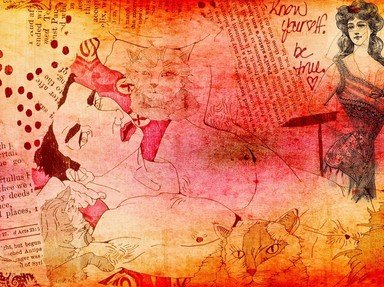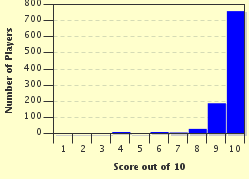Quiz Answer Key and Fun Facts
1. Origami is thought to have been invented by the Chinese, although most Chinese paper folding involved prosaic objects such as hats or boats. It was the Japanese who extended the range of subjects, and turned origami into a true art form. What is the name for this legendary serpentine creature that is often associated with wisdom in Chinese tradition?
2. The Egyptians are said to have worshipped this animal, and the goddess Bast was often depicted as one. What animal is represented by this model, which has eyes made from a squash fold applied to a valley fold?
3. The jointed legs of this figure were created using reverse folds, a technique that causes bits of the figure to project at a different angle. By what name is equus ferus caballus more commonly known?
4. Some starting sequences of folds are used so often in origami that they are given a name. This model starts with a bird base. What kind of bird did Hans Christian Andersen's "Ugly Duckling" turn into when he grew up?
5. This amphibian lends its name to one of the common starting bases in origami folding. Which of these is it?
6. The simplest origami snake can be made by rolling the paper into a tube, then bending the tube to have some sinuous curves. This more complex model shows a snake which is almost certainly a member of the family of venomous Indian snakes whose name is derived from a Portuguese phrase meaning 'snake with hood'. What kind of snake is this?
7. The Moors in Spain also appear to have had a tradition of paper folding, although it is not known whether it was developed independently of the Asian tradition, or whether it travelled west along the Silk Road. What animal, an important participant in a ritual that is often considered the traditional sport of Spain, is shown here?
8. Pleat folding is useful for creating a fan-like effect, such as can be seen in the tail of this figure. What marine animal, well known because the male actually incubates the young in a pouch, is shown here?
9. Many origami figures are created by assembling independently-folded modules to create a new structure. What Australian bird, shown here, has been created using such a modular technique?
10. Of course, one of the most famous origami animals is the one used to produce the shapes displayed here at the Peace Memorial Park in Hiroshima. What shape is supposed to bring luck if you fold 1,000 of them?
Source: Author
looney_tunes
This quiz was reviewed by FunTrivia editor
WesleyCrusher before going online.
Any errors found in FunTrivia content are routinely corrected through our feedback system.


